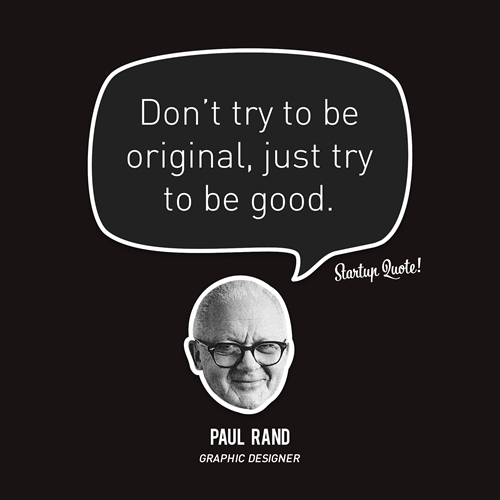
I am feeling this in a deep, deep way right now. Sometimes you just have to let go of the quest for uniqueness in favor of (a) getting it DONE, and (b) doing a good job that will please the client. And that’s a-okay.
Please discuss.
(From Startup Quote, via the inimitable Nubby Twiglet.)
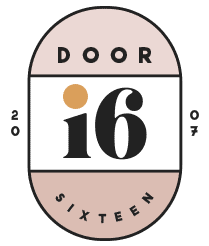
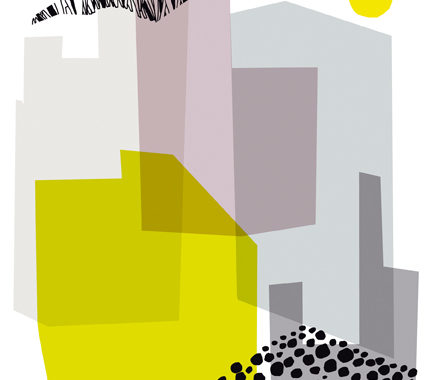
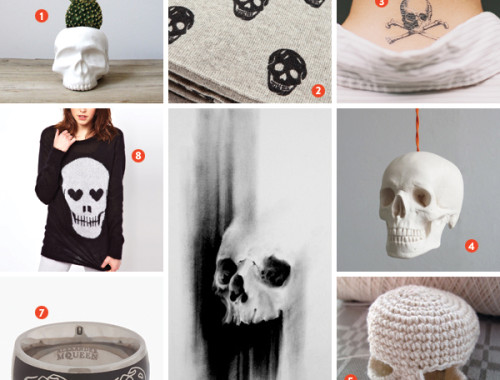
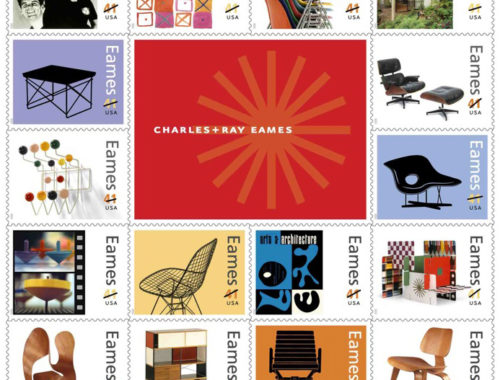

32 Comments
Hells to the YES, lady.
I’m not a designer of any kind, but that seems like good advice in general frankly.
I love that you used the chubbiest Paul Rand picture too… it’s fantastic.
Of course that is ok, especially as it pertains to client work. This is how I’ve been operating with work projects for awhile. More often than not, I’ve found that clients just want you to get the work done and do it well. works for me too since you know how I feel about client work!
I think you do your fair share of being original in your designs, so yes, being good is often, if not always, good enough.
Some clients aren’t going to understand uniqueness no matter what. Some of the best work gets binned, but since the client gets to choose the often mediocre concept, executing that mediocrity flawlessly is the best anyone can hope for.
Printed this one out; Paul Rand will be watching the design process from on high on my studio wall ;]
I feel that when you are focusing on what you do good, originality comes naturally.
@Matt: I didn’t make the graphic, it’s from StartupQuotes! But still. Yes. I love the photo, and I love Paul Rand more than I can adequately express. I also hope that no one reading this post confuses him with Rand Paul.
@Susan: And then there are the times when you just have to be a total hack, and hope no one notices. 😉
this is so true anna. i tell ya if only the powers at be would see that.
This is so, so true for life in general. Just what I needed right now, thank you!
You’re on to something there Anna. There are some clients that you just know want something familiar and safe, and you are frustrating yourself, your boss, the client and everyone else by pitching work that’s out of their comfort zone. Depends on the client, as always. The ones who appreciate and push for a high creative standard are pure gold. Not to be confused with (you’ve got me started now) the ones who fancy themselves as pretty arty and want to do your job for you.
I so struggle with this too. But what I struggle with more is that so often I feel like being part of an in-house team, I’m thought of as far less talented than a freelance designer even if I produce better work. I work for a publishing house designing books…Anna, do you feel this too or do you generally feel respected by your colleagues? Maybe I merely need to work for another company instead of going freelance.
Originality in art is over-rated in our culture, I think. It’s natural to be influenced and build upon the work of those that came before us. I think owning your work, believing in it, and executing it well are more important. “There is nothing new under the sun…”
@Fiona: Even after all these years of working in commercial art, I still sometimes have to check myself and keep in mind that my job is less about my own self-expression than it is about attracting consumers to someone else’s non-visual work. Of course my design sense and perspective are an important component in the process, but at the end of the day, the product is the text inside the book — less so the package that surrounds it. (I don’t say that to diminish the importance of design, of course! And as a consumer, I can say that book covers do matter to me, and I think of them as part of the overall product.)
@lori: I know exactly the feeling you’re talking about (I work in-house, too), but now that I’ve been doing this long enough to hire freelancers myself, I see things a little differently. Working in-house can sometimes get a little mechanical and rote. We have an idea of what will get approved the fastest, and I think sometimes we tend to shoot for that mark immediately rather than really pushing ourselves to think of better solutions and more high-concept ideas. Obviously we wind up at that point because we’re tired of having to redo and dumb-down and suck the life out of our hard work over and over again, but sometimes the “far out” stuff we do does get approved! Freelancers often tend to shoot for that higher mark right off the bat, because they have less to lose — they still get a kill fee even if everything they do is rejected.
How long have you been working at your company? I’ve been where I am for just over 12 years now, and it’s only been within the last 4 or 5 of those years that I’ve really started to feel confident about my work. There’s very little turnover in my department, and I can honestly say that we all have a great amount of respect for each others work.
@Kara: Not only in art, of course, but in all aspects of life!
As an unemployed Graphic Designer, I’ve felt lately like I have to do something grand (ie: unique) to catch the eye of potential employers. But this may serve as a good reminder to get back to the root of it all… the fundamentals… as these are the things I KNOW I am knowledgable in and good at.
Thanks Anna.
I think everybody who works with something creative knows the feeling. This fantastic movie (and book) by the talanted Joanna Rubin Dranger tells the story perfectly.
http://frokenmarkvardigochkarriaren.se/?lang=en
Anna, thanks so much for a fresh perspective! I’ve been with my company for 10 years and my team is much like yours—full of mutual respect—but I’m not responsible for hiring freelancers so I guess I lose sight of what you said about how we (in-house) get in a groove and don’t always push ourselves to the max. We just hired a guy who’d been freelancing and he’s been asking why some things work the way they do and we’re telling him ‘hey, that’s what editorial demands.’
I sort of feel the opposite of you in that the past year or two I’ve started feeling less confident and less pleased with my work, but maybe that’s really a sign that I’m either not trying hard enough or I’m focusing too much on my own self-expression. I think I’ve got to regain some balance b/c I’ve always wanted to work in publishing.
I am not a designer, but I was thinking about the idea of originality and its value just last night. In some ways, it seems like a virtue Americans value more than other cultures, and as time passes, it seems to become even more prized. I think Shakespeare and Marlowe are pretty good examples of artistic genius that is not precisely original… many times more a reinterpretation of something classic, well-known, identifiable, comfortable.
In a somewhat similar way, I think traditional French cooking relies on a clear standard and a classic method to achieve a correct result, and judgment of the final product is based more on adherence to the standard than on creativity. Although there’s a new wave of rebellious chefs, it seems that the culture as a whole doesn’t put much value on originality (in their cooking or in their language). It seems, from this point of view, that valuing inventiveness can lead to originality just for originality’s sake and lose sight of attempting to simply produce the best product.
I agree with Paul! If you are consistently doing good work you will naturally improve over time. Your confidence will grow and your clients will see your professionalism and that will increase confidence and they will be more open minded to more creative and unique solutions.
I always like to propose a conservative, middle and more unique idea to my new clients. What I notice is if you don’t show what they ‘expect’ they might not feel like you have listened to them or you are dismissing the conventional without consideration.
I once worked in-house and one reason I left was the sales people kept coming back to me with comments like “they loved what you did last year, just do that again” UGH. Talk about no variety. As my own company it’s all variety, but it is a lot more work! I love it, but no situation is perfect.
Hi Anna
I’m also an in-house book designer here in Australia, and readily identify with lori’s observations about sometimes being though of as less talented than the freelancers that are called in on some projects. There are two of us designers in-house trying to get through an enormous amount of books per year and we often find, like you, that we’re shooting for that fast approval mark! We generally present three different concepts at a time (two that will be generally acceptable and then one more ‘out-there’ one that perhaps speaks more to our own design sensibilities – we occasionally get lucky, so it’s worth it from time to time).
http://www.thedieline.com/blog/2010/7/13/museum-quality-or-market-success.html
Here’s an interesting essay on this topic. I think we’re making the same point – sometimes this approach, sometimes that – though I’m being less, ahem, mellow about it. BTW I totally agree with you about self-expression as a motivation in commercial art. I was talking rather about defending appropriate work I sincerely believe is right for the client. *Sometimes*
Just the advice I needed right now! I think good will lead to unique given time. Going to try to keep those words with me!! Thanks!
BE GOOD to please the client.
BE ORIGINAL to please yourself.
So true. I worked for that design studio for 4 years and now I’ve worked in-house for 5. As I’ve gained experience, I think I’ve been more pleased with my work, if only because I’ve readjusted my parameters for satisfaction: I enjoy pushing my favourite clients little by little into accepting change by working with them on an ongoing basis, getting to know them, what they do for the university, what their personalities are like. And part of that is building trust by being good or conscientious. My challenge is powering through the internal red tape (of which there was very little at the studio) to get them there.
My former boss (owner of said studio) used to say that it took 5 years to gain the trust of a client so that they were really open to considering far-out ideas. I’ve found that in-house, this time is shorter, but one still has to do the “good” work in the meantime.
I think people appreciate and gravitate toward the results of someone doing their best. The art I love are not products of quests for originality, but of honest investigations into what is the best one can give to the world. I am frequently encouraged by the following:
“Nothing is original. Steal from anywhere that resonates with inspiration or fuels your imagination. Devour old films, new films, music, books, paintings, photographs, poems, dreams, random conversations, architecture, bridges, street signs, trees, clouds, bodies of water, light and shadows. Select only things to steal from that speak directly to your soul. If you do this, your work (and theft) will be authentic. Authenticity is invaluable; originality is non-existent. And don’t bother concealing your thievery – celebrate it if you feel like it. In any case, always remember what Jean-Luc Godard said: “It’s not where you take things from – it’s where you take them to.”
— Jim Jarmusch
or why just dont do both.
as soon as I saw this i printed it out and put it on my bulletin board. it’s along the same lines as “keep it simple” for me.
I had a hard time this week with an invitation design. Customers are coming to me for my aesthetic but every time I try to make something new and extra special. Yet, I kept on coming back to something I felt had already been done (by me) before. Eventually, I stopped second guessing myself and just rolled with it. The client loved it and I felt validated. But had the client rejected it I would’ve agreed but felt completely stumped as to a new direction.
P.S. Are you following Angry Paul Rand on Twitter? Hilarious.
the Rand quote is too funny, as he was paraphrasing Mies vd Rohe’s quote.
“It is better to be good than to be original”
tru dat.
This should quote could eliminate a lot of bad and pretentious design.